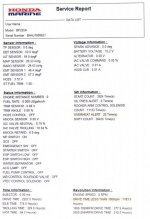brettmarl
Regular Contributor
Honda dealer just rechecked the numbers via Dr Honda and TPS is reading 49% at idle and 99% WOT, which seems much better to me. I guess there was some confusion in the tech's notes and the service mangers understanding.
Thanks for the help - I'm keen to demystify this stuff as best I can
I might spring for the Dr Honda cable, so I can explore some of this myself as I learn more. My first newbie task will be changing fluids and filters.
Thanks for the help - I'm keen to demystify this stuff as best I can
I might spring for the Dr Honda cable, so I can explore some of this myself as I learn more. My first newbie task will be changing fluids and filters.


